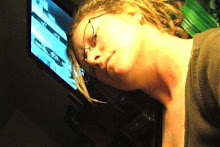Sitney, “Structural Film”
2. How is structural film different from the tradition of Deren/Brakhage/Anger, and what are its four typical characteristics?
Structural film differs in that it is “cinema of the mind, rather than the eye” Fixed camera, looped film, flicker and rephotography
3. If Brakhage’s cinema emphasized metaphors of perception, vision, and body movement, what is the central metaphor of structural film? Hint: It fits into Sitney’s central argument about the American avant-garde that we have discussed previously in class.
The metaphor of consciousness, the mind is the central metaphor
4. Why does Sitney argue that Andy Warhol is the major precursor to the structural film?
Warhols films attempted to outlast viewers attention, staring at the same thing for hours, enduring sameness emptiness, how long before your mind begins to wander. Essentially Warhols films also attempted to address the inner workings of the mind, like structural film
5. The trickiest part of Sitney’s chapter is to understand the similarities and differences between Warhol and the structural filmmakers. He argues that Warhol in a sense is anti-Romantic and stands in opposition to the visionary tradition represented by psychodrama/mythopoeic/lyrical films. But for Sitney’s central argument to make sense, he needs to place structural film within the tradition of psychodrama/mythopoeic/lyrical films. Trace the steps in this argument by following the following questions:
a. Why does Sitney call Warhol anti-Romantic? Sets up the camera and walks away, indifferent to direction lighting photography associated with the others.
b. Why does Sitney argue that spiritually the distance between Warhol and structural filmmakers such as Michael Snow or Ernie Gehr cannot be reconciled?
Warhols fixed camera gaze at sameness attempts to outlast perception and force viewer to make interesting, Snow and Gehr are more contemplative, like purposeful meditation on ontology
c. What is meant by the phrase “conscious ontology of the viewing experience”? How does this relate to Warhol’s films? How does this relate to structural films?
(I love how these film theory writers enjoy being pedantic ….sometimes I wonder if they aren’t trying to outdo each other)
Purposely examining the nature of reality, existence…metacognition… as it relates to how the eye perceives and the mind interprets that information. For Warhol, as earlier stated, it is about emptiness…how long can the mind remain fixed on sameness before it begins creating variations or simply wanders. Structural films are trying to induce an alternate state of consciousness to some means. Simply Warhol achieved this by duration no intention to guide the mind, now they are using this technique to manipulate your mind
d. Why does Sitney argue that structural film is related to the psychodrama/mythopoeic/lyrical tradition, and in fact responds to Warhol’s attack on that tradition by using Warhol’s own tactics? I think I have already answered this… Warhols reactions to the others film forms was to not control what happens in front of the camera, by not attempting to use metaphor to try and represent what we think our minds reality is, but simply allowing the mind to do this on it’s own. Using these techniques the structure filmmakers are trying to induce specific state of perceived reality not with representation but more like meditation.
6. What metaphor is crucial to Sitney’s and Annette Michelson’s interpretation of Michael Snow’s Wavelength? Consciousness.

No comments:
Post a Comment